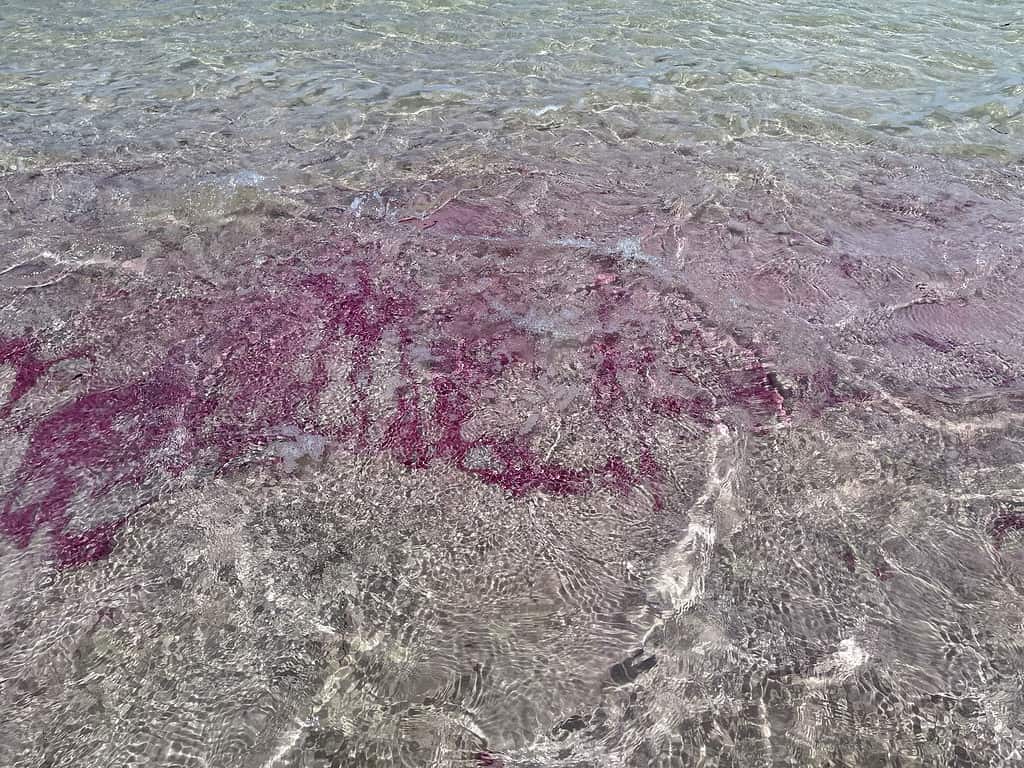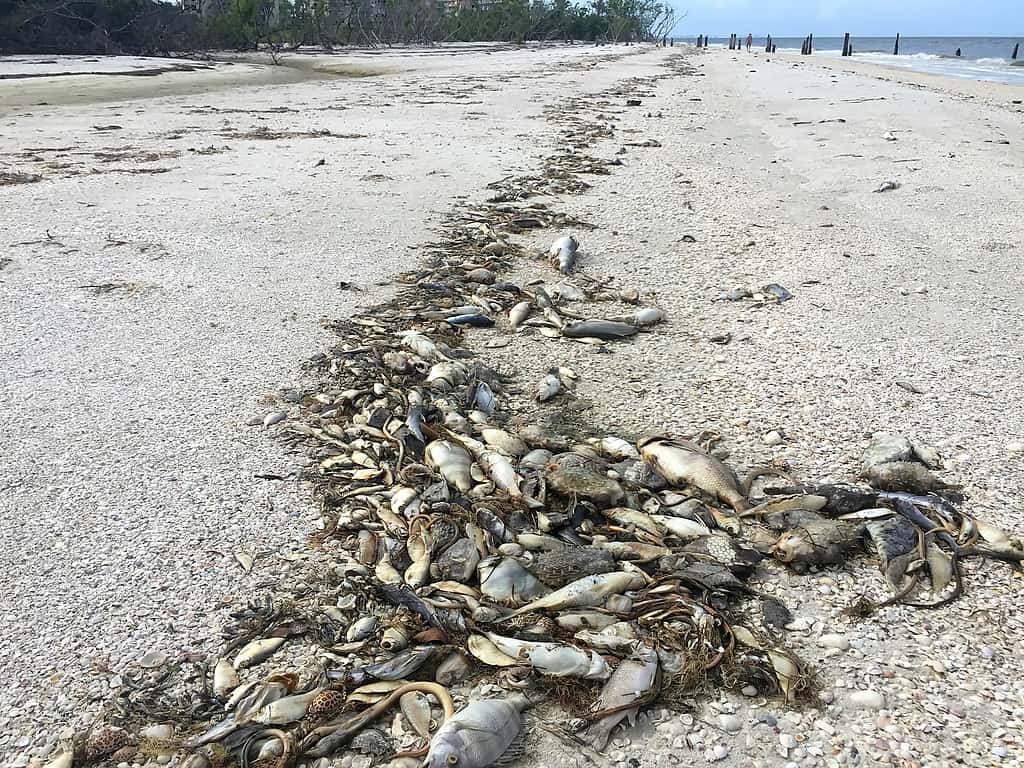Florida’s red tide is an extraordinary natural occurrence with significant implications for marine life and people. In this blog post, you’ll find a complete breakdown of the red tide phenomenon: what it is, how to protect yourself from its dangers (especially if you’re immunocompromised), and why taking preventive measures should be your top priority during a red tide outbreak. Read on to gain complete insight into this remarkable event.
What is Florida’s Red Tide?

Florida’s red tide, otherwise known as
Karenia brevis, is a destructive type of harmful algae bloom.
©iStock.com/kaiao
Florida’s infamous red tide, otherwise known as Karenia brevis, is a destructive type of harmful algae bloom (HAB) that manifests itself in the Gulf of Mexico. These blooms feature microscopic marine algae whose presence cause the water to turn red, brown, or green shades. While many species are capable of causing a ‘red tide,’ primarily the organism named after its home state — Karenia brevis — that creates them here.
The Dangers of Red Tide

Red tide unleashes potent neurotoxins called brevetoxins that can be hazardous to marine life, leading to mass fish kills.
©Jillian Cain Photography/Shutterstock.com
The toxic algae causing the red tide unleashes potent neurotoxins called brevetoxins that can be hazardous to marine life, leading to mass fish kills and the deaths of sea turtles, birds, dolphins, and manatees. Even after these organisms die off and their cells break down, the toxins remain in the water, where they can become airborne via crashing waves.
For humans, the dangers of red tide are also significant:
Respiratory irritation
The airborne brevetoxins can cause coughing, sneezing, and a burning sensation in the eyes, nose, and throat, particularly in people with pre-existing respiratory conditions like asthma or COPD.
Neurological symptoms
In severe cases, ingesting contaminated seafood or inhaling airborne toxins can lead to neurological symptoms such as headache, dizziness, disorientation, and even seizures.
Shellfish poisoning
Consuming shellfish contaminated with brevetoxins can lead to neurotoxic shellfish poisoning (NSP), which can cause severe gastrointestinal and neurological symptoms.
Why Immunocompromised Individuals Should Be Extra Cautious
Immunocompromised individuals, including those with weakened immune systems due to illness, age, or medical treatments, are at a higher risk of experiencing severe health effects from red tide exposure. Consuming contaminated seafood may make them more susceptible to respiratory irritation, neurological symptoms, and infections. As a result, these individuals need to take extra precautions during a red tide event.
How to Stay Safe During a Red Tide Outbreak
Stay informed: Keep an eye on local news and the Florida Fish and Wildlife Conservation Commission’s website for news on red tide conditions in your area.
Avoid affected beaches
If a red tide is present in your area, avoid going to the beach or swimming in affected waters.
Wear a mask
If you must be near the water during a red tide outbreak, wearing a mask can help reduce your exposure to airborne toxins.
Don’t eat contaminated seafood
Pay attention to local shellfish harvesting closures, and avoid consuming seafood caught in areas affected by red tide.
What Are Some of The Common Beaches in Florida to Have Red Tide?

Siesta Key beach in Sarasota, Florida is among the state’s beaches where red tide has been detected.
©iStock.com/csfotoimages
Red tide events can vary in location and intensity from year to year, but some beaches in Florida are more commonly affected by the phenomenon. Here are a few of the beaches where red tide has been detected:
Siesta Key
Located near Sarasota, Siesta Key is a popular tourist destination that has experienced red tide events.
Lido Key
Also near Sarasota, Lido Key is another beach impacted by red tide blooms.
Venice Beach
Venice Beach, situated south of Sarasota, is another beach where red tide can occur.
Fort Myers Beach
Fort Myers Beach, located in Lee County, has experienced red tide events, sometimes leading to beach closures.
Sanibel Island
You can recognize Sanibel Island for its magnificent beaches and plentiful wildlife. However, it has been a witness to red tide as well.
Captiva Island
Situated just north of Sanibel Island, Captiva Island has also gone through red tide episodes.
Naples
The beaches around Naples, including Vanderbilt Beach and Clam Pass Park, have seen red tide.
Marco Island
Located south of Naples, Marco Island has seen red tide blooms that have led to fish kills and respiratory irritation for beachgoers.
Clearwater Beach
Clearwater Beach, located on Florida’s west coast, has also experienced red tide events, although they are less frequent than beaches further south.
St. Pete Beach
Another popular tourist destination, St. Pete Beach, has occasionally been affected by red tide events.
It’s essential to check for updates on red tide conditions before visiting any Florida beach, as conditions can change rapidly. The Florida Fish and Wildlife Conservation Commission maintains an up-to-date map of red tide conditions on its website, which can help you make informed decisions about which beaches to visit.
Conclusion
Florida’s red tide is a fascinating natural phenomenon but can also be dangerous, especially for immunocompromised individuals. By staying informed, avoiding affected areas, and taking necessary precautions, you can reduce your risk of exposure and ensure your safety during a red tide outbreak.
Thank you for reading! Have some feedback for us? Contact the AZ Animals editorial team.








